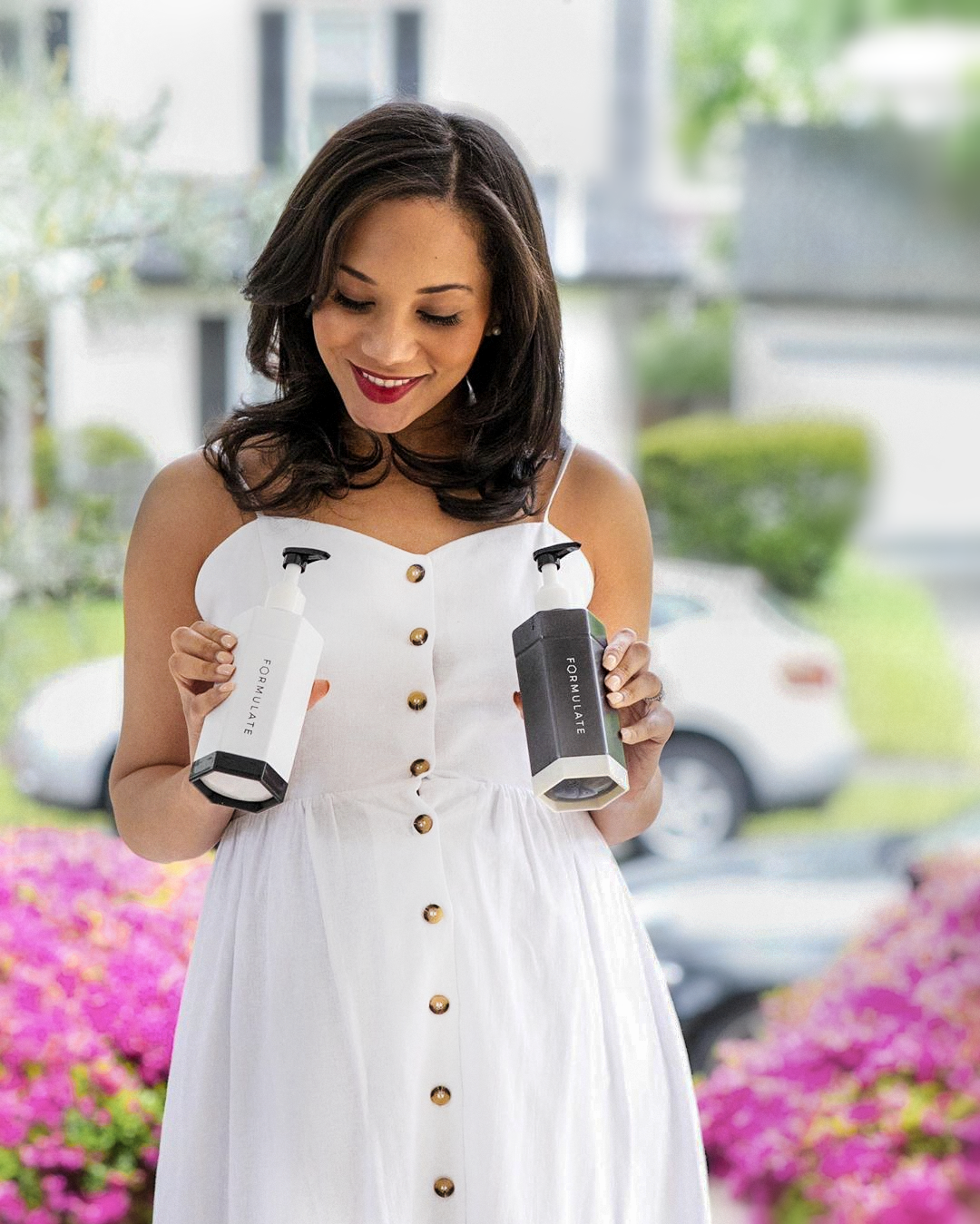If there's one thing that the celeb stylists that we consulted for this article agree on, it's this: wait at least a little bit of time in between dye jobs.
Stylist Annagjid "Kee" Taylor works with celebs including Keke Palmer, Tiffany Haddish, and Nafessa Williams. She suggests clients follow the "hair care rule of thumb" of waiting four to six weeks before grabbing the dye once more. "This allows for a little bit of growth and minimizes the risk of damage."
She adds, "If you have dark hair and are bleaching it, you may want to take a 'wait and see' approach, as this process is very damaging. If you put your hair through the process of bleaching again too early, it can become too damaged."
Singapore-based stylist Andrea Claire works with clients including Liv Lo Golding, Sarah Slean, and Romee Strijd. She suggests a more client-specific schedule of hair dying. "How long you should wait before dying your hair again really depends on what is happening with your hair and how many layers of chemical service is already on the hair shaft. Every hair situation is different. You could have to wait two weeks, up to well over six months."
So why do you need to wait to dye your hair?
Claire says it's a way to prevent unintended hair loss. "If you have multiple chemical services on your hair then colouring again too soon can leave you with disastrous results."
And that's totally true. There's no question about it -- dyeing your hair is one of the most damaging things you can do to it. The process is complex, and involves multiple types of damage. Let's take a closer look at the process of dying hair to learn more.
 Step 1: Lift the cuticle. If your hair isn't "opened up", the dye molecules won't have anywhere to go. Lifting the cuticle involves raising the teeny tiny scales that make up your hair's outer cuticle, usually through the application of ammonia. The goal isn't to strip these scales away -- you'll smooth them back down later.
Step 1: Lift the cuticle. If your hair isn't "opened up", the dye molecules won't have anywhere to go. Lifting the cuticle involves raising the teeny tiny scales that make up your hair's outer cuticle, usually through the application of ammonia. The goal isn't to strip these scales away -- you'll smooth them back down later.
Damage risk: Even though the goal isn't to strip the scales away, sometimes it happens anyway, either partially or entirely. A hair strand without a cuticle is one that's prone to tangles, unshiny, and very fragile -- it has no armor.
Step 2: Lighten the hair. Now that the cuticle has been lifted, hydrogen peroxide is added. It reacts with the pre-existing pigment molecules in your strands, turning them colorless. If your goal is to go from black to blonde, you'll need to repeat this step several times.
Damage risk: Melanin (the pigment molecules) helps your hair maintain its hydration. Take the melanin away, and you risk dry hair. Also -- every time you add something to your hair cuticle while it's open, it becomes further deformed from its original shape.
Step 3: Add dye precursors. Once these little guys are slipped into your strands, they'll react with one another, as well as the hydrogen peroxide and ammonia, to form the final, large dye molecules. These dye molecules are too large to fall out of the open hair cuticle.
Damage risk: you're again adding new stuff to your open cuticle, deforming its shape. A deformed cuticle is one that's less shiny and manageable.
Step 4: Smooth the hair cuticle. An acidic conditioner is applied to try to push the scales back into their prior shape.
Damage risk: This is the only reparative part of the process. However, it's unlikely that you'll get your hair cuticle to be as closed as it was prior to dying. These little scales won't just snap magically back into place -- every time you dye, they become more and more open afterwards, regardless of the amount of conditioner you slather on.
These are all the reasons why Claire won't dye a client's hair without letting them know the risks, especially if they've already dyed/otherwise chemically altered their hair before. "When I'm in a situation like this with a client I will recommend some transition options as we work towards a hair goal. A good reshape cut and a treatment such as Olaplex for one."
Claire isn't afraid to remind her clients about the consequences they could face, should they try to dye too soon. "You need to decide if you want hair on your head, or in a takeaway ziploc. I would assume everyone wants to avoid the chemical haircut."

How can you hide your roots in between salon visits?
Taylor recommends hats and silk wraps ("just pull your hair back and wrap around the area where your roots are exposed!") If accessories are your thing, she suggests looking into getting your roots touched up for temporary coverage.
Another option is to skip coloring your roots altogether, and instead opt for pre-grown out roots (seriously, this is a thing, and it's awesome).
Wanna learn more hair industry secrets? Here's what's next on the reading list:
Hair Secrets: 7 Things Your Hairstylist Won't Tell You
(but totally wants you to know)
The Job Interview: Hairstyle Tips That Will Get You the Position
People are constantly freaking out about what to wear to job interviews... but what the heck do you do with your hair?
French Girl Hair | 5 Must-Know Secrets
Get the je n'ais se quoi look to your hair that you've always dreamed of.


 Step 1: Lift the
Step 1: Lift the 
